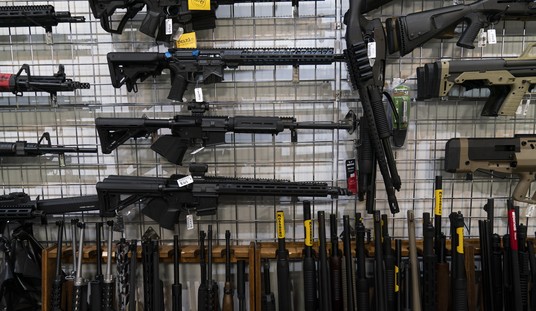 I have loved stainless steel handguns ever since I purchased my first Smith and Wesson Model 66, .357 Magnum revolver back in 1981. Ease of maintenance is the primary reason I prefer stainless over blued guns, but also I think stainless steel guns just look sexy, especially if done right. North American Arms does it right.
I have loved stainless steel handguns ever since I purchased my first Smith and Wesson Model 66, .357 Magnum revolver back in 1981. Ease of maintenance is the primary reason I prefer stainless over blued guns, but also I think stainless steel guns just look sexy, especially if done right. North American Arms does it right.
Many years ago, I was intrigued when I saw the NAA mini-revolver, but frankly, since I was just starting to teach handgun use for self-defense, my attention was focused on full-size revolvers and semi-autos and I left the mini-revolvers for someone else to ponder. But also at this time, I became aware of a small, very concealable .32 ACP, the Seecamp, but I didn’t have the serious coin to cough up at the time to buy one, (around $400, some 20 years ago).
I also had a brief dalliance with an AMT .380 backup back in the early 80s when I was working as a street cop and wanted a backup gun, but I couldn’t seem to keep that particular gun running, and it quickly became trading stock and hit the road.
When I heard that NAA, the mini revolver people, were going to make a .380 that was almost as small as a Seecamp, and one that worked better than the AMT, my interest was enthusiastically piqued. That was 10 years ago, and since then, my collection of NAA Guardians has grown to include two .380s and one of the newer .32 NAA Guardians which utilizes the proprietary Cor-Bon .32 NAA loading, which is a .380 case necked down to accept a .32 caliber bullet. But that’s ancient history, as this gun review centers around the newest addition to the Guardian line-up, the .32 NAA with a Gutter Snipe style of sighting system.
Carrying the Guardian
Off and on over the years, I have made the Guardian a pocket companion, slipping it inside the pocket holster which came with one of the first .380s we acquired. For a deep concealment firearm, but one which is also immediately accessible from the front pants pocket, it is tough to beat. Slimmer than a .38 snubby and arguably containing more firepower than either a Smith & Wesson J-frame or a Ruger LCR, it is the perfect companion when carrying a gun on the belt simply isn’t an option. If a person owns one of these pistols, there is no reason (other than a legal one in an “anti” jurisdiction) that you cannot have a serious self-defense handgun with you. An ankle holster is another viable option, but I am not sure a belt holster would be a logical concealed carry choice for the Guardian because with the slick, tapered lines of the pistol and its’ short barrel, a regular belt holster might not keep it secured as snugly as I would prefer. This is just my unverified opinion, as I haven’t carried it on a belt, but keep this in mind if you give it a try.
Shooting the Guardian
I won’t sugar coat it, shooting the Guardian is not a pleasant event, but then again, I haven’t found too many things that were truly worthwhile and also easy or pleasant. The trigger pull is not what I would call a “match grade” trigger, and on the model being tested, it broke at a “crisp” 15 pounds. That’s right, 15 pounds! Heavier than most double action revolvers, but I personally don’t find that to be a big problem. I frankly like the heavy action pull of the trigger when carrying inside a pocket because even inside a pocket holster, a heavy double action trigger pull means less likelihood of an accidental discharge. Having said that, the trigger is very smooth, and I think very manageable. I am not taking the Guardian to a bull’s-eye match anyway.
Additionally, the recoil is snappy, much like shooting an airweight .38 with +P rounds. The gun isn’t for little old ladies with tender hands. It is a serious piece of self-defense equipment for serious people who don’t mind a little discomfort in exchange for concealabilty and reliability.
It is a close up, personal defense gun, and the user needs to understand its limitations.
Fact, when I agreed to accept this assignment, I told the CCM editor that I would not be testing the gun for accuracy at 10 yards, but instead, 10 feet. She understood the wisdom, and acquiesced. So, how does it do at 10 feet? Actually, when I took it to the range, I decided what the heck? I’ll give it a go at 10 yards anyway. Average group of three targets, shooting six rounds off hand was just about six inches; much better than I remembered and I could actually see the Gutter Snipe sights in daylight.
Having achieved a decent sized group, even at 10 yards, I took the little pocket pistol to 10 feet, a much more realistic personal defense distance. At 10 feet rapid fire, I shot six rounds into the head of the test target, with a group of about two inches. That will work.
Shooting in the Dark
NAA boasts that the Gutter Snipe sighting system also works in the dark, but to this experienced shooter’s eye, I was somewhat skeptical. Those dots looked pretty small in the daylight. It is nice owning a shooting range with instant low light capabilities, so off to the dark house I went. I was pleasantly surprised to sight down the top of the slide and see those three glowing dots of tritium proudly proclaiming, “We are here!” Cool, but how does it shoot in the dark? At 10 yards, I had some trouble hitting the center of the target, as all the shots went low. Well, that told me that this isn’t a 10 yard gun in the dark, so I went to 10 feet, and realizing that lining up the tritium dots resulted in low hits at 10 yards, I took a page out of the late, great Jim Cirillo’s playbook, turned the three dots into a pyramid, sighted over the gun and fired six shots rapid fire. The results were perfect. Six shots where they needed to be for self-defense.
Up until this time, I had been using the proprietary Cor-Bon 71 gr. FMJ, which a person can purchase directly from either Cor-Bon or North American Arms. I needed to shoot some of the 60 gr. JHP, the load that a person should use for self-defense, to make sure it hit the same spot and functioned as flawlessly as the 71 gr. load. I loaded up the magazine and fired a six shot rapid fire group into the head of the test target, one handed, but not in the dark. One handed would be how I would envision using the NAA anyway, so I felt this was a good test. Again, as in the test using 71 gr. FMJ, there were no malfunctions and a perfect rapid fire group. In fact, I experienced no malfunctions whatsoever when testing the gun, and I cannot remember any of my Guardian pistols ever malfunctioning. My wife and I routinely carry them for deep concealment carry guns, with no qualms about their not working. The only glitch I saw was that about half the time the last empty shell casing would not eject, but instead, be caught in the slide. I jokingly referred to this as an “empty chamber indicator” and in any event, not a real concern in my book.
You can have it your way!
The Guardian is one pistol which is available from the factory with many options. One very nice addition which adorns my .32 NAA is a set of coco bolo grips, which really even out the sharp recoil and feel very nice. A person can also have the factory install a set of Novak sights or even a Crimson Trace Laser Grip. Available too, is a pocket holster from the factory, a nice touch. These accessories all add a few dollars to the price of the gun, but I think they are worth it in the long run.
If there was one improvement I would like to see added to future generations of the Guardian, it would be a slide stop. But, that is being pretty picky, and I am not at all reticent about either using the gun myself or recommending it for self-defense, as long as one understands its limitations
All prices as of January 2011.









Join the conversation as a VIP Member